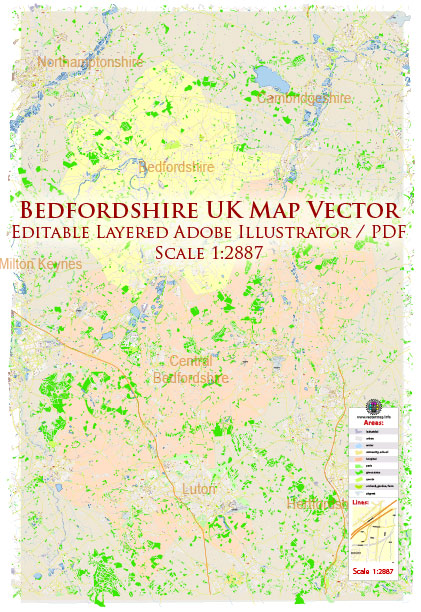Bedfordshire is a historic county located in the East of England, United Kingdom. Its history of creation and development is a fascinating journey through the centuries. Here is an overview of the history of Bedfordshire:
- Early History: Bedfordshire has a long history that dates back to prehistoric times. Archaeological evidence suggests that the area was inhabited as far back as the Paleolithic era. During the Roman period, it was part of the province of Britannia.
- Anglo-Saxon Period: In the early medieval period, Bedfordshire was part of the Anglo-Saxon kingdom of Mercia. The town of Bedford, from which the county derives its name, was founded in the 9th century. It served as a strategic point on the River Great Ouse.
- Norman Conquest: The Norman Conquest of England in 1066 had a significant impact on Bedfordshire. The county was controlled by the Normans, and castles like Bedford Castle were built to exert their authority in the region.
- Formation as a County: Bedfordshire was formally established as a county during the medieval period, likely in the 12th century. It was originally part of the historic county of Buckinghamshire but later became a separate county with its own administration.
- Medieval and Tudor Period: Bedfordshire continued to evolve during the medieval and Tudor periods. The county was predominantly agricultural, with farming and wool production being key economic activities. Several historic churches and manor houses from this era can still be seen in the county.
- Civil War: During the English Civil War in the mid-17th century, Bedfordshire witnessed conflict between the Royalists and Parliamentarians. The town of Bedford was a key garrison town for the Parliamentarian forces.
- Industrial Revolution: The Industrial Revolution brought about changes in Bedfordshire’s economy, with the growth of industries like lace-making, brick-making, and the development of the railway system. The town of Luton, in particular, became known for its hat-making industry.
- Modern Era: In the 20th century, Bedfordshire saw further industrial development, especially during and after World War II. The growth of aviation and engineering industries became prominent in the region, and several major companies, including Vauxhall Motors, established operations in the county.
- Contemporary Bedfordshire: Today, Bedfordshire is known for its mix of urban and rural areas. The county is home to several historic landmarks, such as Woburn Abbey and Wrest Park, as well as vibrant towns like Bedford, Luton, and Dunstable. It also hosts the headquarters of some major companies and institutions.
Bedfordshire’s history is rich and varied, reflecting the changing economic and social dynamics of England over the centuries. It has evolved from a rural and agricultural county to a region with a diverse and growing economy.


 Author: Kirill Shrayber, Ph.D.
Author: Kirill Shrayber, Ph.D.